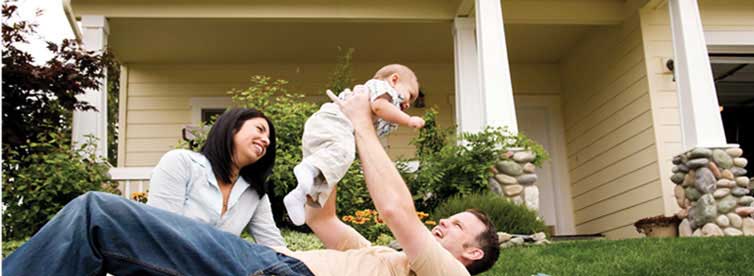The gradual upward movement of Arizona’s current Real Estate market is very much like most other markets throughout the U.S. The rate of Arizona homeownership has been on an upward trajectory since 2015 when it hit a 20-year low point of 61.7%. 2016 saw a moderate rise to 61.9, and a substantial increase to 64.4% was noted by FRED, the Federal Reserve Bank of St. Louis, at the end of 2017.
While median home sales prices are increasing at a moderate pace, rents have been steadily rising since 1995. AZCentral reports that in the past year, average rents in Phoenix rose 6.5 percent, nearly twice the national average of 3.3 perent.
Rising rental costs and mortgage interest rates remaining within reason, are the most likely catalysts of 2018’s Home Buyer confidence.
U.S. Census data confirms that homeownership numbers across the country are demonstrating a similar trend.
Homeownership Rates Edging Up
By Suzanne De Vita
According to Census data, the homeownership rate has risen to 64.3 percent—a departure from the first quarter of 2018, when the homeownership rate was 64.2 percent, as well as the second quarter of 2017, when the rate was 63.7 percent.
For the all-important millennial segment—who are challenged by limited options in their price point—the homeownership rate is 36.5 percent, up from 35.3 percent in the first quarter of the year and the second quarter of 2017. Demand from millennials has propelled the overall rate rise, according to Aaron Terrazas, senior economist at Zillow.
“Over the past two years, millennials have been on a home shopping spree, driving a bump in the overall homeownership rate in Q2,” said Terrazas in a statement. “Homeownership among younger households still remains well below pre-crisis and pre-bubble norms, but those same groups are currently experiencing some of the biggest gains.”
Housing is majority occupied by owners, according to the data, at 56.3 percent; 31.3 percent is occupied by renters, who, in the past, the proportion was titled toward. The homeowner vacancy rate, which is representative of for-sale stock, is 1.5 percent, while the rental vacancy, representative of for-rent stock, is 6.8 percent.
“Household formation among renters was anemic for a fifth consecutive quarter, which has contributed to softer rent growth nationwide,” Terrazas said. (In May, rents rose 2.1 percent year-over-year, according to research by Zillow.)
“During the decade from 2006-2016, renter household formation dominated overall household formation with renters accounting for almost all new households nationwide, but in mid-2016, that decade-long dynamic began to shift,” Terrazas said. “Rental vacancy rates remain low by historic standards—particularly in the urban centers that have seen the strongest rent gains in recent years. As interest rates rise and purchase affordability becomes more stretched over the next year, the pendulum could swing back toward more renter household formation.”
Suzanne De Vita is RISMedia’s online news editor. Email her your real estate news ideas at sdevita@rismedia.com. Reprinted with permission from RISMedia. ©2018. All rights reserved.
For more information, Call or Text: 602-999-0952
eMail: golfarizona@cox.net
Bill Salvatore / Arizona Elite Properties
Residential Sales, Marketing, and Property Management
Founder: AZVHV ⋅ MEMBER: Heroes Home Advantage
Voted East Valley Tribune’s: Best Gilbert Realtor
Looking for something special? Try our MLS Home Search, request a Custom Search, or see some of the Newest Listings for:
Arizona Golf Properties
Arizona Horse Properties
Luxury Homes
New Construction
What would be the best Phoenix area city for you? Check new listings of homes for sale in these cities before you decide!
Gilbert
Chandler
Scottsdale
Mesa
Ahwatukee
Sun Lakes / Active Adult
Queen Creek
San Tan Valley
Tempe
Phoenix
Fountain Hills
Gold Canyon
Apache Junction


